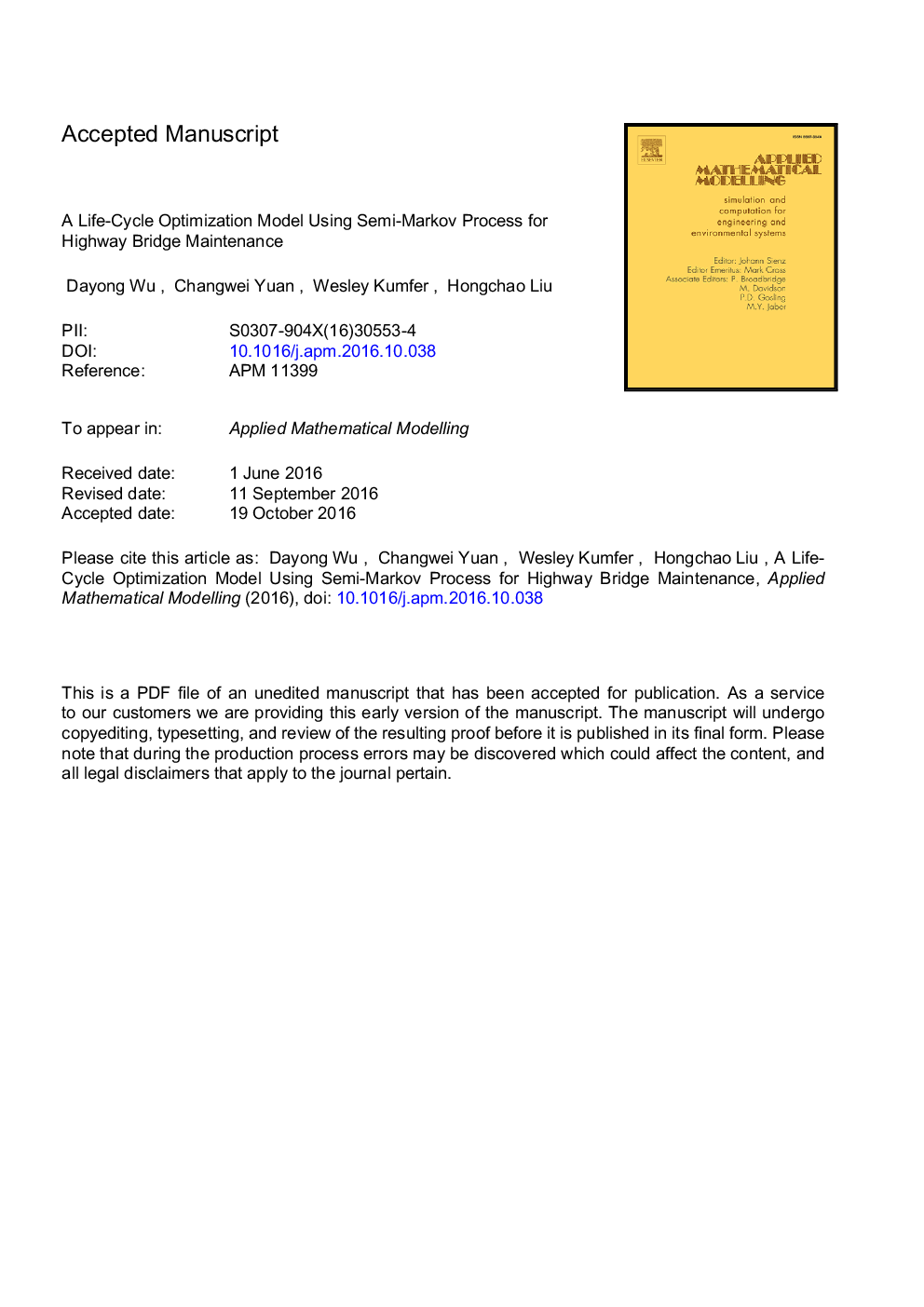| Article ID | Journal | Published Year | Pages | File Type |
|---|---|---|---|---|
| 5471399 | Applied Mathematical Modelling | 2017 | 43 Pages |
Abstract
Due to a variety of risks related to aging, construction, material degradation, harsh environment, increasing traffic, and insufficient capacity, a large percentage of bridges in the U.S. highway system are deteriorating beyond acceptable standards. Although significant investments are needed to bring bridges back to acceptable condition, most highway agencies lack the appropriate funding and therefore need effective methodologies for allocating limited resources efficiently and cost-effectively. This paper presents a life-cycle optimization model using a semi-Markov process and demonstrates how the proposed method can assist highway agencies to make more quantitative and explicit decisions for bridge maintenance. The 2012 National Bridge Inventory (NBI) dataset for the State of Texas was analyzed in this study to illustrate bridge structural responses and behaviors under uncertainty and risks. The proposed method is accurate when compared to real data and customized to help highway agencies to optimize their decisions on structuring bridge maintenance, and consequently, leading to cost savings and more efficient sustainability of their bridge systems. The major contribution of this research is the low-error model and process algorithm for selecting the most appropriate maintenance strategy. If employed properly, it may allow agencies to more effectively maintain an aging infrastructure system.
Related Topics
Physical Sciences and Engineering
Engineering
Computational Mechanics
Authors
Wu Dayong, Yuan Changwei, Wesley Kumfer, Liu Hongchao,
